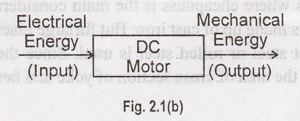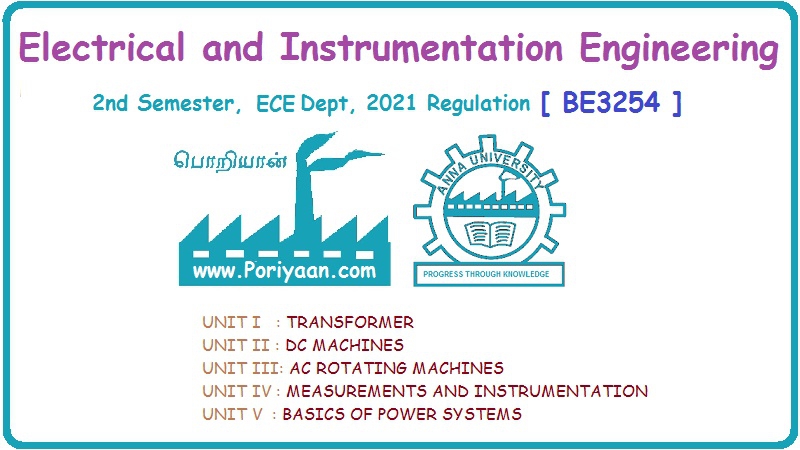Electrical and Instrumentation Engineering: Unit II: DC Machines
Introduction of DC Machines
An electrical generator is a rotating machine which converts mechanical energy into electrical energy. This energy conversion is based on the principle of electromagnetic induction.
INTRODUCTION
DC
Generator
An
electrical generator is a rotating machine which converts mechanical energy
into electrical energy. This energy conversion is based on the principle of
electromagnetic induction. According to Faraday's laws of electromagnetic
induction, whenever a conductor is moved in a magnetic field, dynamically
induced emf is produced in the conductor.

When
an external load is connected to the conductor the induced emf causes a current
flow in the load. If a single conductor is used the emf produced is small.
Large number of conductors used to obtain greater emf and the rotating
conductor assembly is called an armature. Energy conversion is shown in Figure
2.1(a).
DC
Motor
While
a DC generator converts mechanical energy Figure 2.1(b) in the form of rotation
of the conductor (armature) into electrical energy, a motor does the opposite.
The input to a DC motor is electrical and the output is mechanical or torque.
The fundamental principles and construction of the DC motors are identical with
DC generators which have the same type of excitation. A DC machine that runs as
a motor will also operate as a generator.

Electrical and Instrumentation Engineering: Unit II: DC Machines : Tag: : - Introduction of DC Machines
Related Topics
Related Subjects
Electrical and Instrumentation Engineering
BE3254 - 2nd Semester - ECE Dept - 2021 Regulation | 2nd Semester ECE Dept 2021 Regulation
